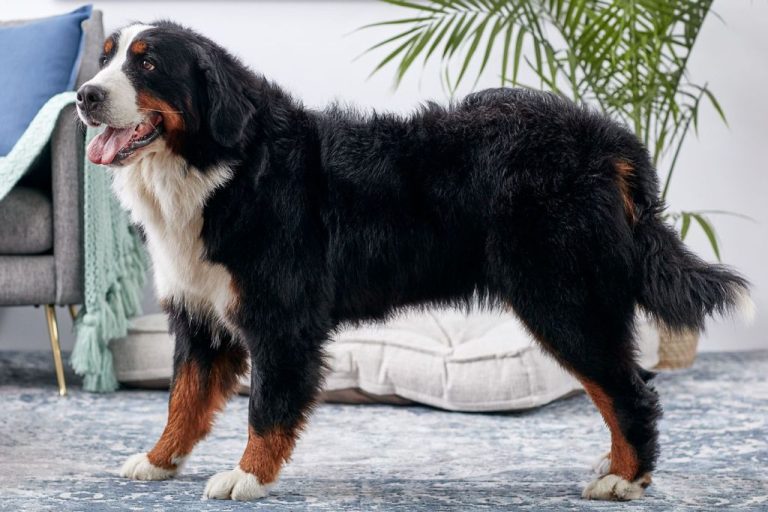Labrador Retriever: A Comprehensive Breed Profile
The Labrador Retriever is one of the most popular dog breeds in the world. Prized as loyal family pets, reliable working dogs, and superior service animals, Labradors have a well-earned reputation for being gentle, intelligent, and eager to please. With their friendly nature, athletic build, and enthusiasm for life, it’s no wonder Labrador Retrievers consistently rank at the top of the American Kennel Club’s list of America’s favorite breeds.
The origins of the Labrador Retriever can be traced back to the island of Newfoundland in eastern Canada in the late 1700s. Originally bred to help local fishermen retrieve fish and nets, the Labrador developed its signature “otter tail,” webbed feet, and water-resistant coat that made it perfectly suited for a life of swimming and cold water retrieving. Over time, their intelligence and willingness to work made Labs excellent hunting companions as well. The breed rose to popularity in England and America by the early 19th century.
In terms of physical characteristics, Labrador Retrievers are medium-large dogs, athletic and balanced in build. They have broad heads, thick necks, and sturdy legs. The Lab’s short, dense, weather-resistant coat comes in three main colors: black, yellow, and chocolate. Weighing 55 to 80 pounds and standing 21.5 to 24.5 inches tall, their muscular bodies are equipped for hard work and outdoor activity.
Known for their kind temperament, Labs make devoted family companions. They are outgoing, affectionate dogs that get along well with children and thrive when included as part of the family. Intelligent and eager to please, Labrador Retrievers are highly trainable and often used as guide dogs, search and rescue dogs, and other types of service animals. Proper socialization and training can direct their lively energy into positive outlets. Overall, the Labrador Retriever’s combination of intelligence, athleticism, and gentle temperament has rightfully made them one of the world’s premier dog breeds.
History
The Labrador Retriever originated in Newfoundland, Canada where it was bred to help local fishermen. Known as the St. John’s dogs or Lesser Newfoundland, these medium-sized working dogs would leap into the freezing cold waters to fetch ropes and retrieve fish that had fallen off hooks and nets (source). The St. John’s dogs were crossed with Newfoundland dogs and other retrievers, developing into the breed we know today as the Labrador Retriever.
The first Labradors were imported to England in the 1830s by English nobles who developed a passion for waterfowl hunting. Here the breed was refined into the ideal retriever. Labs were imported to the United States in the early 20th century where they quickly became the most popular breed thanks to their friendly, loyal nature and intelligence.
Physical Characteristics
The Labrador Retriever typically stands between 21.5 and 24.5 inches tall at the shoulder. Males weigh 65 to 80 pounds on average, while females are generally 55 to 70 pounds.
Labs have short, dense, water-resistant double coats which come in three colors: black, yellow, and chocolate (or brown). The yellow coat color can range from pale cream to deep fox red. Chocolate Labs range from light to dark brown. There are also some rare color variations in Labs, including silver, charcoal, red, white, and Dudley/Dilute labs which have lightened noses and lips.
According to the AKC, there are two genes that determine a Lab’s coat color – the B gene and E gene. The combinations of these genes account for the most common colors of black, yellow, and chocolate (See genetics of Labrador coat color). While technically not official colors according to breed standards, silver, charcoal, red, and white Labs do occur due to other genetic factors.
Temperament
Labrador retrievers are known for their kind, friendly, and eager-to-please temperaments. According to The Labrador Site, “The Labrador’s kind expression is mirrored by his kind nature. His easy going, tolerant temperament makes him a joy to live with” (source). Labradors are highly intelligent dogs that are very responsive to training and want to please their owners. Their friendly and gentle temperament makes them excellent family dogs, as they get along wonderfully with children and other pets.
The Labrador’s friendly and patient nature allows them to excel as service dogs, search and rescue dogs, and as guide dogs for the blind. According to Your Purebred Puppy, “Nearly every obedience class I’ve ever taught has included at least one Lab. That’s not because the breed is more obedient, but simply because their temperament allows them to participate easily without becoming stressed” (source). The breed’s eager-to-please temperament and high intelligence means they pick up on training quickly.
Exercise Needs
Labrador Retrievers are energetic, playful dogs that require plenty of exercise and activity each day to stay fit and satisfied. Their high energy levels stem back to their origins as water retrieval dogs, so daily exercise is essential for Labs to prevent restlessness or unwanted behaviors like excessive barking or chewing. But how much exercise does a Labrador need on a daily and weekly basis?
Experts generally recommend around 60-120 minutes of exercise per day for an adult Labrador Retriever. This can be broken up into multiple walks, play sessions, or activities throughout the day. Most Labs will need at least 30-60 minutes of rigorous exercise like jogging, running, hiking, swimming, playing fetch, or other active games. Beyond that, additional exercise like walks, training sessions, or interactive toys can make up the remainder to reach the daily minimum. For very active Labs or field type lines, they may need upwards of 2 hours per day.
On a weekly basis, Labs should receive at least 8-10 hours of overall exercise. This allows for both higher activity days along with some lower intensity time mixed in. A good goal is an average of at least 1 hour of exercise per day over the full week. Labs thrive when they can freely run and play in a securely fenced yard as often as possible too.
Finally, mental stimulation is just as important as physical activity for Labrador Retrievers. Their high intelligence requires activities like training sessions, puzzle toys, hunting/retrieving games, and socialization to stay happy and prevent boredom. A balance of both physical and mental exercise is ideal for the typical Labrador Retriever’s needs.
Training
Labrador Retrievers are renowned for their intelligence and trainability. They are naturally eager to please, which makes them highly responsive to training techniques that rely on positive reinforcement such as treats, praise, and toys. According to the American Kennel Club, “Labs are notoriously food-motivated and keen to work for treats and kibble.”
The Labrador’s combination of intelligence, athleticism, and desire to please enable them to excel in obedience training as well as specialized skills such as hunting, agility, therapy work, service tasks, and more. However, their energetic nature means Labs do best with plenty of mental stimulation and activity to prevent problem behaviors from developing out of boredom.
Some training tips for Labrador Retrievers include using whistles and hand signals, breaking training into short sessions to hold their interest, utilizing food puzzles, and engaging in activities that tap into their natural retrieving instincts. With positive, reward-based methods and proper socialization, Labs can become wonderful family companions. Their trainability makes them ideal for both novice and experienced dog owners willing to put in the time.
Health
The Labrador Retriever is generally a healthy breed with a lifespan of 10-12 years, though some can live longer. Some common health issues to look out for include:
Hip and Elbow Dysplasia – This is an inherited condition that leads to improper formation of the hip and elbow joints. It can cause arthritis and lameness. https://www.metlifepetinsurance.com/blog/breed-spotlights/labrador-retriever/
Obesity – Labs love to eat and can easily become overweight. This puts extra stress on their joints and internal organs. Keeping a Lab at an ideal weight is important. https://www.petmoo.com/dogs/labrador-retriever/
Eye Conditions – Labs can be prone to cataracts, progressive retinal atrophy, and other eye problems. Annual eye exams by a vet are recommended.
Allergies – Both food and environmental allergies are common in Labs. Symptoms include itchy skin, ear infections, and gastrointestinal issues.
Bloat – Labs’ deep chests put them at risk for this life-threatening condition where the stomach twists. Feeding smaller meals can help prevent bloat.
Labs that are well-cared for through proper diet, exercise, vet care, and genetics can live a full, healthy life. But be aware of the potential health issues to catch any problems early.
Nutrition
Labrador Retrievers have some specific dietary needs due to their energetic nature and tendency to overeat. It’s important to feed them a high-quality dog food formulated for large, active breeds. The food should have named meat proteins like chicken, lamb or fish as the first ingredients. The diet should contain 20-25% protein and 12-15% fat from quality animal sources.
Labradors thrive on foods with omega fatty acids like fish, flaxseed and canola oil to promote a healthy skin and coat. They also require adequate calcium and phosphorus for bone development, especially when puppies. Some Lab owners prefer to feed a fish-based or lamb-based diet to avoid potential skin allergies associated with chicken. Supplementing their diet with vegetables, fruits and whole grains provides added vitamins, minerals and fiber.
It’s recommended to divide a Lab’s food into 2-3 meals throughout the day, rather than free feeding, to prevent overeating. Puppies should eat 3-4 times daily. Labradors are prone to rapid growth and weight gain, so their portions need monitoring. Adult Labs do well with about 2-3 cups of premium dry kibble per day, adjusted according to activity level. Treats should be avoided or limited to training rewards.
With proper nutrition and exercise, Labs typically remain lean and muscular. Their diet should be adjusted over time based on body condition, energy level and stool quality. Consulting with a veterinarian helps ensure the diet provides complete and balanced nutrition tailored to a Lab’s needs.
Grooming
Labs shed quite a bit, especially during seasonal coat changes in the spring and fall. Their short, dense double coat sheds moderately year-round. Daily brushing can help manage loose hair and keep it under control. A slicker brush, undercoat rake, or furminator-style brush are good choices for grooming the Lab’s coat.
Labs shed about as much as, if not more than Golden Retrievers. The amount of shedding can vary greatly between individual dogs. Some Lab owners report having to vacuum daily, especially during peak shedding seasons. Frequent brushing and bathing can help reduce loose hair. However, be prepared for daily brushing sessions and regular vacuuming if you own a Lab.
Bathing a Lab every 2-3 months can help keep their skin and coat healthy. Avoid over-bathing, as this can dry out their skin. Use a moisturizing dog shampoo made for double coats. Regular nail trimming, teeth brushing, and ear cleaning are also part of the grooming routine.
Finding a Lab
When looking to add a Labrador Retriever to your family, you have a few options for finding the right pup. Many people look for Lab breeders in their area who focus on producing healthy, well-socialized Lab puppies. Reputable Labrador breeders will screen breeding dogs for health and temperament issues and will be happy to answer any questions about their puppies and breeding program.
Another great option is Labrador Retriever adoption through local rescues or shelters. Many adoptable Labs are surrendered by owners who can no longer care for them, or are strays in need of new homes. Adoption fees are usually much lower than buying from a breeder. The adoption process involves filling out an application and meeting available dogs to ensure a good match. Rescues often have a good sense of each dog’s personality and can advise which would fit best with your lifestyle.
When searching for a Lab through either breeders or adoption, be patient and take your time to find the right fit. Do your research to locate responsible breeders focused on furthering the breed or reputable rescues who look out for the dogs’ best interests. Finding the ideal Labrador for your home is well worth the effort!






